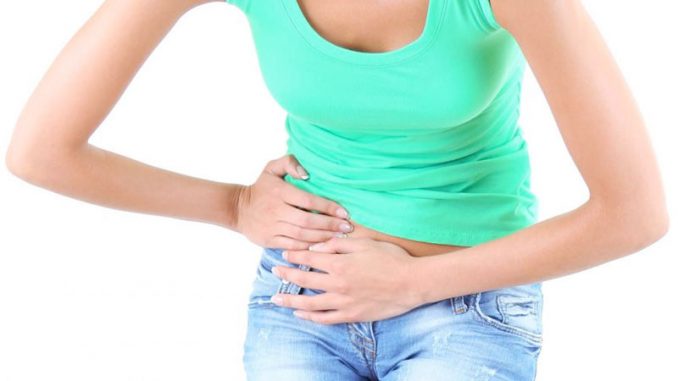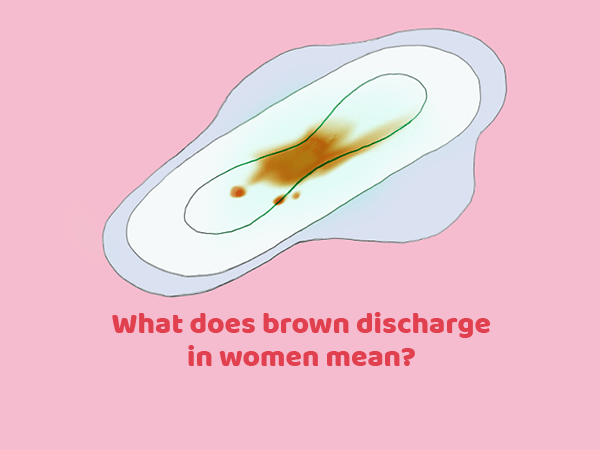
Brown Discharge Ka Kaaran – Vaginal discharge is a normal process and vaginal bleeding occurs during your periods. Before ovulation, a lot of mucus is produced, 30 times more after ovulation. It lubricates the vagina during a phase of your menstrual cycle due to the production of more vaginal water. Things to be concerned about include if the vaginal discharge is yellow or green in color, or is sticky like cheese, or smells badly of vaginal discharge. If you are concerned about this, it is important to get a doctor’s examination. Brown discharge after the period is quite common and usually means that the blood is being cleared in the old menstrual period. Notifying some lights for dark brown spots after your period is over, does not mean that there is something to worry about. Many women experience some deep spots after their periods as part of their regular menstrual cycle.
What is Brown Discharge?
Because regular vaginal discharge is clear or milky white, it does not cause any odor. Many women are concerned when they see brown vaginal discharge or spotting before or after their periods. Even thick white discharge is normal until it smells bad. Thankfully, brown vaginal discharge is usually not harmful.
Common and main causes of brown discharge after the period –
1.Ovulation
Ovulation is the time of the month (12 to 24 hours) when the egg is ready to mate with semen or sperm. A brown discharge occurring 7 to 14 days after your monthly may mean that you are ovulating. Typically, menstruation lasts 28 days, and about 2 weeks after the start of your menstrual cycle, your body releases an egg. However, the duration of the menstrual cycle can be 21 to 35 days and this period can be different for every woman.
2.Implantation Spotting due to egg transplantation
After your periods, there is another cause of speckled brown discharge during bleeding. Although not all women experience transplant bleeding as an early sign of pregnancy, mild bleeding is common and not a concern. With brown spots, you may notice an increase in milky white secretions and may also cause slight pain due to the transplant. If there is no brown discharge in any period, and you are expecting pregnancy, then there are other early pregnancy signs that you may see.
3.Birth control
Birth control pills can cause a small amount of brown discharge between your periods, especially in the first few months. Brown discharge can occur while taking birth control pills or after an intrauterine device – IUD.
4.Tension
When you are under a lot of stress, chances of the irregularity of periods also increase, and you may experience brown discharge. Acute stress over a period of time can cause a change in your hormones resulting in irregular dark brown spots or secretions.
5.Around menopause
As you get closer to menopause, your periods become less regular and may cause some brown discharge after your period. Irregular periods or mild menstrual flow may mean that the blood is not flowing quickly.
6.Uterine fibroids in the uterus
Another abnormality of the reproductive system that can result in a brown discharge after your menstrual period is fibroids in the uterus. These are non-carcinogenic growths in the uterus that can cause some light brown discharge a week after your menstrual period. As you can see, brown discharge can usually be considered 1 symptom for the reasons stated above. If you are curious or worried then mention it to your gynecologist and get it checked.
Prevention
To maintain the health of women, an important role is played by B vitamins and trace elements (iron and zinc). Therefore, the prevention of inflammatory and hormonal disorders of the reproductive system should begin with proper nutrition (and consumption of vitamins rich in vegetables and fruits), a healthy lifestyle, a systematic visit to the gynecologist.

Forecast
If pregnancy is observed in a woman planning a pregnancy rather than a monthly brown discharge, it will undoubtedly be the best prognosis.
Menstrual Cramp (Periods Ka Dard)
Menstrual cramp is a pain in the lower abdomen and pelvis area during women’s periods. This pain can range from normal to very severe. Menstrual Pain Pre-Mental Syndrome is distinctly different from common pain in the lower abdomen and pelvis. In many women, the pain of both premenstrual syndrome and menstrual camp appears simultaneously.
Reason
During the menstrual cycle, the uterine contractions begin. The lining inside the conception causes the secretion of a hamster named prosto gliding, which causes menstrual pain and many other problems. The higher the prostaglandin secreted, the greater the pain. Postoglendig hormones can also cause vomiting, diarrhea, and headache.
Symptoms
The pain of the menstrual creamp lies between the lower abdomen and the vaginal and anal passage. The pain increases and reaches the back of the back and thighs. This pain can be mild to very severe. This pain can also be persistent and may occur intermittently in a short time. Menstrual pain usually occurs before the onset of the period and within 24 hours the pain becomes severe. However, after one to two days, the pain gradually reduces. Some women experience dizziness, headache, and vomiting when the pain is severe. Some women may have diarrhea and constipation during menopause. This is due to prostaglandin hormones, which causes contraction of the uterus with pressure on the intestines. Some women may also have to go for frequent urination.
Also Read – 7 Reasons That Can Cause Periods Twice in a Month
Diagnosis and investigation
Diagnosis of menstrual pain is a clinical diagnosis that can be relieved on its own. After a few menstrual cycles, women become very aware of the signs of pain occurring in it. In this regard, the doctor obtains information about the patient’s complete medical history and gives appropriate advice for treatment. The doctor examines the pelvis when the pain symptoms are severe.
Blood test: If there is a risk of infection, a doctor can get blood tested. Ultrasound, laparoscopy, hysteroscopy, etc. other tests can also be done to identify and diagnose the disease.
Ultrasound Detection: At the time of the pelvic examination, ultrasound is recommended if any abnormal elements are found. Apart from this, many other tests can be done to check the internal parts like CT scan and MRI.
Laparoscopy: This is a common surgical procedure in which the doctor directly examines the cavity of the pelvis by a fiber optic scope.
Hysteroscopy: A hysteroscope, a small and light instrument is inserted through the vaginal tract to examine the uterine cervix and the inside of the uterus.
Treatment of Menstrual Cramp (Periods Ka Dard ka Ilaaz):
All women can also treat it themselves. In the olden days, the most popular treatment for its treatment was that women used to fall asleep when the pain started. This drug-free treatment not only provides sufficient relief from rest and sleep, but also by exercising and walking in it. In this, pain is also relieved by abdominal massage, yoga, and hot water bags.

Non-steroidal pain-relieving drugs:
Usually, nonsteroidal anti-inflammatory drugs, NSAIDs, medicines relieve mild menstrual pain.
Do not eat these 5 things during periods, or it may increase the problem of menstrual cramps
Chocolate: Do not eat chocolate (Diet) Periods: Often, women have a desire to eat something tasty at the time of periods. Therefore, many women eat chocolate during periods. However, you should take care not to eat too much chocolate. Because, eating more chocolate in limited quantity can increase your discomfort. Actually, chocolate contains alkaloids, which increase the pain arising in the body. Therefore, when you want to eat chocolate, eat only a small amount of chocolate. (Diet Tips for Periods) So, many women claim that eating chocolate during their periods helps to boost mood. Similarly, in many studies, it has been said that eating chocolate improves mood. Therefore, women often eat dark chocolate during periods. However, studies have also said that eating dark chocolate can increase the duration of periods. Therefore, avoid its consumption.
Dairy products: Avoid eating milk products like milk, cheese, curd and cheese. Why work the trigger exists acids pain these. So, is your problem and can lead to painDairy products: Avoid eating milk products like milk, cheese, curd and cheese. Why work the trigger exists acids pain these. So, is your problem and can lead to pain.
Also Read – 7 Reasons That Can Cause Periods Twice in a Month
Do not drink caffeinated drinks: A cup of coffee or tea can bring relief to you mentally. However, their consumption during periods can prove to be bad for your stomach. Actually, the caffeine present in tea and coffee increases the tension of your nerves. Due to this, pain and discomfort may increase.
Fast food: Due to its spicy taste, fast food becomes a mood booster for many girls during periods. But, packaged snacks like chips, fries or samosas, fast food like pizza, can increase your discomfort. Of these, the amount of salt is also very high. Due to these, there is a problem of water retention in the body. Therefore, fatigue, pain, and discomfort felt during periods also increase.
Sweet: As there is a lot of change in hormone levels during periods. Therefore, there are fluctuations in the blood sugar level as well. In such a situation, there is a strong desire to eat sweets. But, it can cause you a lot of damage. Actually, the immune system is weakened by sugar.
